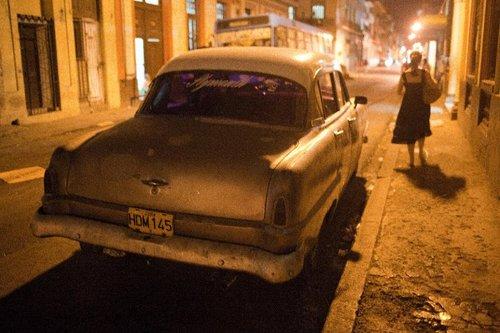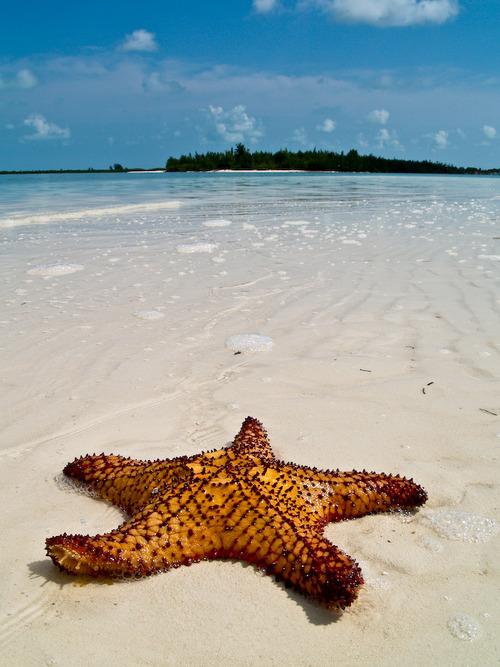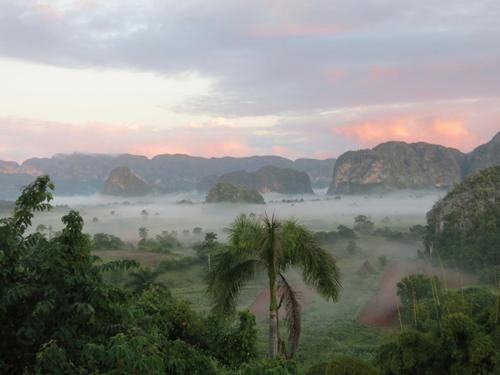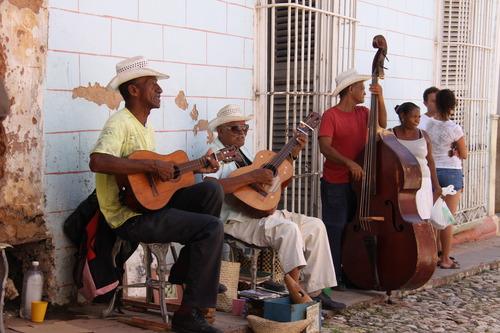Happy New Year from our office staff at aiglabs.com and our families, to you and your family!! We look forward to seeing you in the New Year.
Gemological Laboratory: Field Gemologists, & Field Research Gemologists
Wednesday, December 31, 2014
Tuesday, December 30, 2014
Astronaut Mark Kelly Talks Breitling Watches,
& Aviation at Historic New York Explorers Club
Guests including staff members from American International Gemologists www.aiglabs.com had the exclusive
opportunity to witness an intimate conversation between Kelly and adventure journalist
Jim Clash on the importance of timekeeping throughout his many missions,the
future of space travel and his favorite timepieces from the brand. Guests also had a
chance to meet with Kelly, while viewing the latest pieces from Breitling, including
the Breitling Cockpit B50, and enjoy the Explorers Club during the private event.
“After
wearing a Breitling on three of my four NASA flights, I know that I can count on them
to be precise, functional and durable. I just don’t think you can find a better watch.” said Mark Kelly, “It was also amazing
to get a chance to be in the Explorers Club,
because it is filled with such rich history and has seen so many incredible explorers
come through its doors.”
With
6,000 flight hours in more than 50 different aircraft, 375 aircraft carrier
landings, 39
combat missions and more than 50 days in space, Mark Kelly is one of our
country's most experienced
pilots.
Guests
also had a chance to see the Cockpit B50, which is distinguished by its
exclusive new
Breitling Caliber B50, a SuperQuartz™ movement ten times more accurate than
standard quartz
and chronometer-certified by the COSC (Swiss Official Chronometer Testing
Institute), the
highest benchmark in terms of reliability and precision. Additional functions
include split-time
and fly back capabilities, as well as a second time zone display, a perpetual calendar,
two alarms in buzzer and/or vibrate mode, a lap timer function and a countdown complete
with alarm. Another special feature is its use of UTC (Coordinated Universal
Time, the
aviation reference time) as the time base, which enables the Cockpit B50 to
ensure smooth juggling
with time zones. Breitling has developed an innovative miniaturized
rechargeable battery
system; charging can be done via the electricity grid or through a USB port on
a computer.
The Cockpit B50 also has an ultra-readable display - the two white-on-black
liquid crystal
(LCD) screens are equipped with a unique backlighting system that offers four
levels of
brightness and is activated by pressing in the crown or by tilting the wrist.
Breitling
USA President Thierry Prissert with Mark Kelly
BREITLING
COCKPIT B50
ABOUT
BREITLING : Léon Breitling founded the company in 1884 in St. Imier,
Switzerland.
Breitling
is the world’s only major watch brand to equip all its models with
chronometer-certified
movements, the ultimate token of precision.
With its manufacture of the Caliber 01, Breitling has
created the most reliable and accurate of all
self-winding chronograph movements, its quality
guaranteed
by an unprecedented five-year warranty offered on all pieces equipped with the
in-house
movement. The chronographs are produced
entirely by Breitling in their own workshops, and are
chronometer
certified by the Swiss Official Chronometer Testing Institute (COSC). This
amazing
accomplishment
has further established Breitling as the absolute benchmark in the field of
mechanical
chronographs. Breitling is one of very few companies to produce, develop and
manufacture
their own mechanical chronograph movement in-house. This family business is
also
one of
the last remaining independent Swiss watch brands.
Tuesday, December 23, 2014
Saturday, December 20, 2014
Rock From Russia Contains 30,000 Diamonds
Rock From Russia Contains 30,000 Diamonds | IFLScience
 The micro-diamonds were between 100 and 700 micrometers in size, and many of them occurred in clusters. With millions of carats per ton, this is the absolute highest yield of diamonds ever in a mantle xenolith, the researchers write. Typical diamond ore averages between 1 to 6 carats per ton (a carat is about a fifth of a gram). But being so tiny, these diamonds weren’t worth much as jewelry.
The micro-diamonds were between 100 and 700 micrometers in size, and many of them occurred in clusters. With millions of carats per ton, this is the absolute highest yield of diamonds ever in a mantle xenolith, the researchers write. Typical diamond ore averages between 1 to 6 carats per ton (a carat is about a fifth of a gram). But being so tiny, these diamonds weren’t worth much as jewelry.
Researchers have unveiled a strange ornament-sized rock from near the Arctic that’s red and green and comprised of diamonds. Nearly 30,000 colorless micro-diamonds, to be exact. American International Gemologists, aiglabs.com was at the American Geophysical Union fall meeting in San Francisco, where the findings were presented this week.
The 30-millimeter, 10.5-gram rock was a donation to science from the owners of Siberia’s Udachnaya diamond mine, which is dominated by volcanic xenoliths (Greek for “foreign rock”) with a few precious “diamondiferous” ones. Among these was a unique diamondiferous xenolith with garnet and olivine to give it those Christmas hues. A team of researchers from the U.S., Germany, and the Siberian Branch of the Russian Academy of Sciences created 2D and 3D images of the strange rock using high-resolution X-ray computed tomography (which is similar to a medical CT scan). These images revealed the relative abundance of its various mineral parts, and diamonds made up 9.5 percent by volume.
 The micro-diamonds were between 100 and 700 micrometers in size, and many of them occurred in clusters. With millions of carats per ton, this is the absolute highest yield of diamonds ever in a mantle xenolith, the researchers write. Typical diamond ore averages between 1 to 6 carats per ton (a carat is about a fifth of a gram). But being so tiny, these diamonds weren’t worth much as jewelry.
The micro-diamonds were between 100 and 700 micrometers in size, and many of them occurred in clusters. With millions of carats per ton, this is the absolute highest yield of diamonds ever in a mantle xenolith, the researchers write. Typical diamond ore averages between 1 to 6 carats per ton (a carat is about a fifth of a gram). But being so tiny, these diamonds weren’t worth much as jewelry.
"The exciting thing for me is there are 30,000 itty-bitty, perfect octahedrons, and not one big diamond," Lawrence Taylor from the University of Tennessee said at the conference. "It's like they formed instantaneously. This rock is a strange one indeed."
Their isotopic carbon concentration suggests that the diamonds come from oceanic crust that was forced deep inside the Earth with the movements of tectonic plates. They likely crystallized from fluids that escaped from subducted crust, Live Science explains.
The chemical reactions that create diamonds are still a bit of an enigma, Taylor tells Live Science. Scientists think they originate in the mantle under crushing pressure, then erupt to the surface during explosive volcanic activities. The process typically destroys a lot of the mantle rocks, but this one somehow survived the trip up.
The work will be published in Russian Geology and Geophysics next month. AIG Appraisal will bring it to you once it is published.
Thursday, December 18, 2014
8 Things We're Going to Do as Soon as We're Able to Go to Cuba
A street scene in Havana
On Wednesday, President Obama rocked the travel world, announcing the easing of 53 years of sanctions against Cuba and the start of talks that may usher in a new era of U.S. relations with the once-forbidden Caribbean island. The Twitter-sphere started smoking immediately— over the prospect of legal Cuban cigars. As Sylvain Galineau tweeted: “Diplomatic relations: what everyone heard was ‘Cuban Cigars.’”
Some experts say that we shouldn’t be lighting our stogies in celebration just yet. “The lifting of the embargo will not mean the island will be suddenly open to tourism,” says travel advisor Eric Sheets of Latin Exursions. But we couldn’t help but get excited.

Exploring Havana (Photo: Jonathan Bloom)
Mind you, it’s still possible to go now. In 2012 alone, more than 100,000 U.S. travelers legally visited the island, according to Sheets. American International Gemologists visited the island in 2004. “Cuba is already a top destination in the Caribbean and has more arrivals than Ecuador, New Zealand, and even Costa Rica.”
But the government limits how Americans can see the island by restricting them to highly supervised people-to-people trips through companies like Geographic Expeditions. ”The idea has been that U.S. tourists will act as cultural ambassadors to Cuba by meeting with experts and everyday people,” says Jennine Cohen, managing director of Latin America for Geographic Expeditions.

Along the Malecón in Havana
While you get to see a deeper side of Cuba by meeting architects and economists and dance performers, the downside of these trips is that travelers are not allowed to go off the beaten path. So the prospect of freely being able to come and go and wander the streets of Havana unchaperoned makes us swoon.
Here are eight things we’re going to do as soon as we’re able to go to Cuba with no restrictions.
Relax on Cuba’s Pristine Beaches

Playa de las Estrellas del Mar, also known as “Starfish Beach” (Topyti/Flickr)
According to Cohen of Geographic Expeditions, the biggest request her company gets is from travelers who are looking to go to the beach, which isn’t allowed on people-to-people trips. What they are missing out on are gorgeous white-sand beaches set alongside the neon blue Caribbean sea. One of our favorite spots is the pristine Playa Ancón, minutes from the colonial city of Trinidad. Another discovery is Playa de las Estrellas del Mar, or “Starfish Beach” because it is lined with starfish. If you want to get adventurous, you can go for a swim in the famous Bay of Pigs.
Get Adventurous in Viñales

The Viñales Valley (Thinkstock)
Also off limits to U.S. travelers: adventure travel, since people-to-people trips are highly focused on meeting people. And when the island opens up, be prepared for the adventurers to rush in. The lush Valle de Viñales is a national park and a World Heritage Site best known for its cigar-making industry. But adventure travelers love it, too, for its rock climbing on sheer 1,000-foot limestone faces, with stalactites hanging above. Interestingly, some people-to-people trips allow opportunities to go birding, also a hallmark of Viñales.
Puff on a Cigar — Legally

A stogie and a sip (Thinkstock)
Did we mention that we’re beside ourselves over the prospect of being able to bring Cuban cigars back to the U.S.? Banned since the embargo started, the mighty Cuban cigar is worshipped the world over. Now American travelers will be allowed to come home with $100 worth of tobacco and alcohol products. So that’s good for our rum consumption, too. Cuba Libre, anyone?
Hitch a Ride in a Classic Car in Havana

Vintage American cars in Havana
The dilapidated streets of Havana are lined with perfectly preserved cars of yesteryear — it's like being in a time warp. Many of them operate like illegal jitneys, roaming the streets and picking up multiple passengers along the way. Or if you prefer, Old Car Tours will take you for a convertible ride around the city in a vintage Buick or a Dodge that your grandfather might have driven back in the day.
Listen to Cuban Music on the Streets of Trinidad

Musicians on the streets of Trinidad (Matteo Artizzu/Flickr)
Wherever you go in Cuba, it’s hard to escape the lilting soundtrack of the Buena Vista Social Club. Santiago de Cubais known as the musical capital of the island. But there’s nothing like sitting on the steps of the main church in the cobblestoned town of Trindad, listening to a local band performing “Chan Chan.”
Dine at an Under-the-Radar Restaurant in Havana

The paladar La Guarida (Photo: La Guarida)
It used to be that everyone in Cuba had to eat in government restaurants that served sad Soviet-era ropa vieja (pulled meat) and potatoes. So an industry of illegal paladares sprung up in private homes and deserted buildings, serving much more ambitious dishes. The word "paladar" came from a Brazilian soap opera shown in Cuba in the early 1990s and is Portuguese and Spanish for “palate.” They’re now legal in Cuba, but there’s still an air of mystery around them. One of the most famous is La Guarida, set in a beautifully decaying building that was featured in the movie Strawberry and Chocolate. This is where Jay Z and Beyonce recently spent their fifth anniversary, dining on black beans and rice.
Walk in the Footsteps of Hemingway

Hemingway’s house (Tony Hisgett/Flickr)
Ernest Hemingway’s legend still looms large in Cuba. He first visited in 1928 and became enchanted with the island, eventually moving there and writing many of his best-loved books, including The Old Man and the Sea, A Moveable Feast, and Islands in the Stream. Today, you can visit his former home, Finca Vigía, in a beachside town near Havana. It has been converted into a museum that is filled with his books and keepsakes. And in Havana, one of his favorite bars, La Floridita, still serves the daiquiris that he so loved (though they also make a mean mojito).
Watch Showgirls at the Tropicana

Strutting their stuff at the Tropicana (Atushi Masegi/Flickr)
We debated whether to include this one because it’s so tacky and touristy, but you just have to visit the legendary Tropicana. The open-air Havana nightclub is the stuff of legend. It was featured in Graham Greene’s 1958 book Our Man in Havana and little has changed since.

A few of our favorite things in Cuba (Photo: Thinkstock)
Now What?
And yet, all of this is still at least six months to a year off, according to experts — who also predict that the island will change fast once Cuba's doors are totally open to tourists and travel companies. So, listen to Geographic Expeditions’ Jennine Cohen, who advises: “All those plans to go to Europe? Put those off. This is the year to go to Cuba. It will still be a special destination, but it will soon be a different one.”
Wednesday, December 17, 2014
A diamond’s shape is often the very first consideration when selecting a piece of diamond jewelry. It’s quite clear why: each shape has its own attributes and offers a different aesthetic. Because of the wide variety of diamond shapes available, it’s important to zero in on the shape that works best for you. Today’s installment of GIA’s holiday buying guide series offer a few tips to help you pick the perfect diamond shape.
Diamond shape is regularly confused with diamond cut. However, these two are not one and the same. A diamond’s cut and crafted finish refers to the stone’s facet arrangement, including symmetry and proportion. On the other hand, a diamond’s shape is the general silhouette of the stone: round, square, rectangle, octagonal, oval, marquise, pear, heart, or triangle. Looking at diamonds, shape by shape, is the best way to compare their distinctive qualities and see which one is right for you or as a gift.
Style and Personality
A diamond’s shape can reflect your style and personality. You’ll want to look at and wear these precious jewelry pieces with confidence over the years. Get to know the facts behind each shape to choose the one that’s right for you. For instance, if you love tradition and are drawn to classic timeless fashions, then a round diamond might be for you. When cut as a round brilliant, the diamond’s 58 facets deliver unbelievable sparkle. It’s a shape that’s both versatile and flattering whether the diamond occupies center stage in solitaire engagement ring, as a pendant, or paired with a mate in a set of diamond earring studs.
If your personal style is active and athletic, and you’re drawn to a square shape diamond, then you'll want to keep in mind that this diamond shape features pointed corners which should be protected by prongs. Courtesy of American International Gemologists.
Each shape offers different benefits, depending on design preference and lifestyle. Round continues to be the most popular diamond shape and appears most frequently in solitaire engagement rings. To learn more about each cut’s individual benefits and ideal proportions, consult Tips for Purchasing Fancy Cut Diamonds andWhat is a diamond solitaire setting?
Diamond Shapes for a Vintage Look
Are you an eternal romantic, perhaps drawn to all things Victorian? What about a squarish diamond shape that recalls the nineteenth century “old mine cut”? As you can imagine, diamond cutting was a slow process back then and vintage diamond cuts from that period are known for their distinct appearance.
The octagonal shaped diamond was born during the machine age and the Art Deco period. This shape is a perfect choice whether your style is ultra-modern or old Hollywood glam. We see this shape most often as an emerald cut, with its smooth mirror-like look. It takes a diamond of high quality to pull this off well, so no wonder it was the shape and cut of choice for the engagement ring Brad Pitt designed for Angelica Jolie.
With this information at your fingertips, you are sure to get the most out of your diamond buying experience. Want to know more? How diamonds shape up is an insightful guide to the history behind each diamond shape. Find the one that is perfect for you.
Subscribe to:
Comments (Atom)






